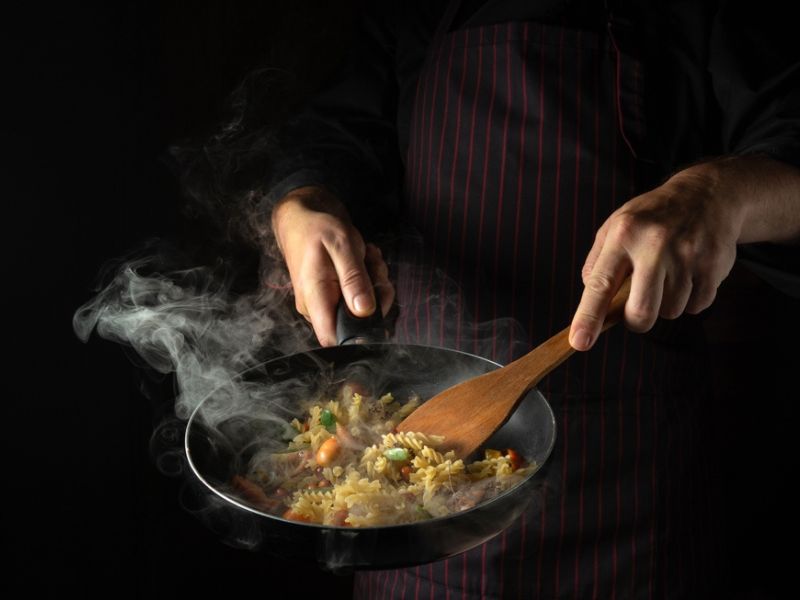Nonstick cookware is commonly made from Teflon. According to APS News, Marc Grigoire created the first nonstick cooking pan with PTFE coating in 1954 at his wife’s suggestion. U.S. manufacturers introduced the pans in 1961.
Since the 1960s, Teflon has become one of many types of nonstick cookware. Despite their popularity, the tools have received intense scrutiny and criticism, with some claiming they are linked to cancer, reduced fertility, and thyroid and kidney disorders.

Image Credit: Shutterstock/Zephyr_p
It’s made with a sandblasted base that gives the nonstick coating a “gritty” surface to stick to. It depends on what you’re dealing with, but the base layer of all nonstick products is the same. Many health risks are associated with Teflon cookware, including liver enzyme changes, decreased vaccination responses in children, high cholesterol levels, and even cancer.
Pros Of Nonstick Cookware
- Food sticks less to the surface with less oil
- Utensils are easier to clean
- Effortless
- You don’t have to worry about sticking and burning when preparing scrambled eggs or light vegetables.
Drawbacks
- There is a cost associated with nonstick cookware.
- Nonstick products with Teflon are the least healthy.
- When non-toxic forms break down, the harmful chemicals released are hazardous, outweighing their benefits.

Image Credit: Shutterstock/VITALII BORKOVSKYI
Teflon Is The Least Safe Nonstick Material.
- Nonstick cooking is most dangerous when cooked at high temperatures.
- Avoid open flames, and replace nonstick cookware immediately if you have birds as pets.
Which Nonstick Cookware Is Safe?
Teflon is the riskiest option, primarily if not used properly. Using ceramic, enamel, seasoned cast iron, or hard anodized aluminum is better than Teflon. With proper seasoning, cast iron can also be nonstick. It lasts forever and doesn’t release toxic chemicals. If you cook with vinegar, citrus, or tomatoes, it releases tiny amounts of iron each time, which is good news for those with iron deficiency.